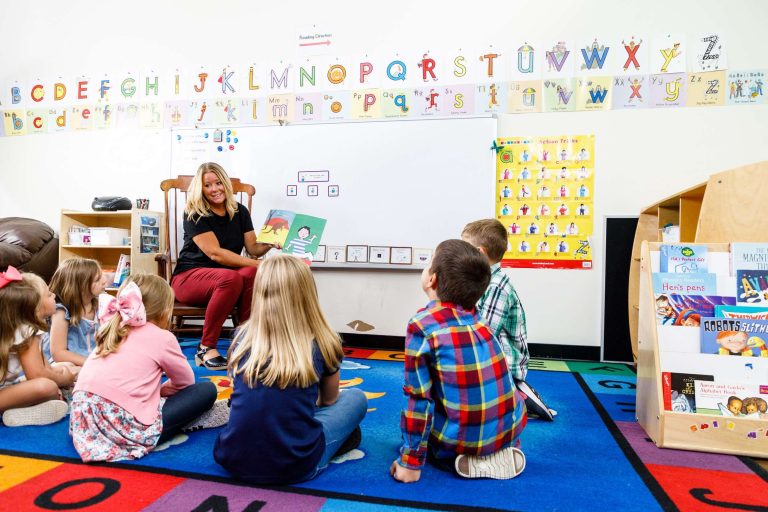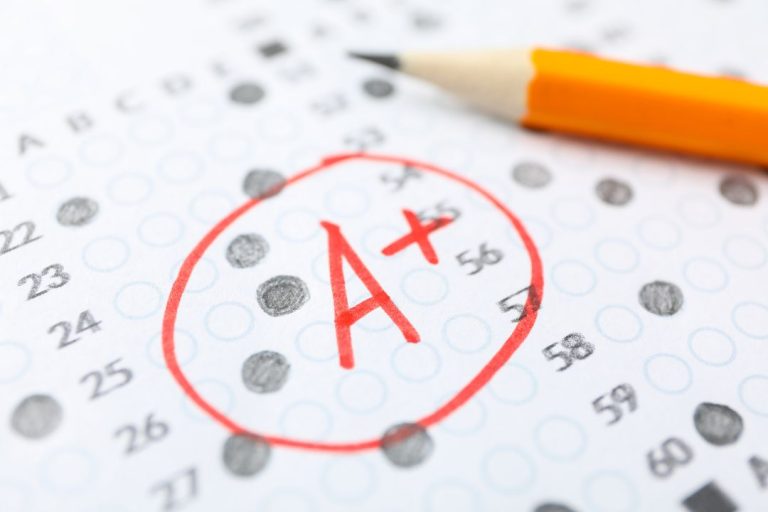How To Teach Sight Words To Preschoolers

To teach sight words to preschoolers, use visually engaging materials and incorporate them into daily activities and games. Teaching sight words to preschoolers is an essential step in their early literacy development.
Sight words are high-frequency words that do not follow regular spelling rules and are difficult to decipher phonetically. By introducing them early on, children can build a solid foundation for reading and writing. However, teaching sight words requires an interactive and engaging approach to keep the attention of young learners.
We will explore effective methods to teach sight words to preschoolers, using visually appealing materials and integrating them into various activities and games. These techniques will make the learning experience enjoyable and help preschoolers become confident readers.

Credit: www.simplykinder.com
Understanding Sight Words
Definition And Importance Of Sight Words In Early Literacy
Sight words, also known as high-frequency words, are commonly used words that appear frequently in written texts. They are words that readers should recognize instantly without having to decode them. These words are usually phonetically irregular and cannot be easily sounded out. Teaching sight words to preschoolers is an essential step in their early literacy development because these words make up a significant portion of any written material.
Recognizing The Role Of Memorization Versus Comprehension
When it comes to teaching sight words, it is important to understand the distinction between memorization and comprehension. While memorizing sight words is necessary for young learners to become fluent readers, it is equally important to foster their comprehension of these words. Children should not just be able to recognize sight words; they should also understand their meaning and be able to use them in context.
Memorization alone is not effective in developing literacy skills. It is essential to provide opportunities for children to use sight words in sentences and engage them in activities that promote comprehension. By combining memorization and comprehension, educators can help preschoolers develop a solid foundation for reading and understanding written text.
| Memorization | Comprehension |
|---|---|
| Recognizing sight words instantly | Understanding the meaning of sight words |
| Reciting sight words out of context | Using sight words in sentences |
| Repetition and practice | Application and integration |
By striking a balance between memorization and comprehension, educators can ensure that preschoolers not only recognize sight words but also understand their function and purpose in language. This approach lays a solid foundation for their future reading and writing skills.
Sight Words Mastery And Preschoolers
Sight words are an essential component of literacy development in preschoolers. These high-frequency words are crucial building blocks for young children to become fluent readers. Teaching sight words can be a rewarding experience, as it not only enhances their reading skills but also boosts their confidence in the classroom and beyond. To effectively teach sight words to preschoolers, it is important to understand their cognitive abilities and set age-appropriate expectations for sight word recognition.
The Cognitive Abilities Of Preschoolers In Learning Sight Words
Preschoolers possess remarkable cognitive abilities that allow them to absorb and retain information at a rapid pace. Their brains are like sponges, eagerly soaking up new knowledge. When it comes to sight word mastery, preschoolers demonstrate an incredible ability to memorize and recognize words through repetition and visual association.
At this stage, preschoolers are actively developing their letter recognition and phonemic awareness skills. They are able to identify and differentiate between letters, sounds, and even simple words. This cognitive growth lays the foundation for sight word acquisition, as children begin to understand the concept of print and start making connections between written and spoken language.
Preschoolers also have an increasing attention span, allowing them to engage in sight word activities for longer periods. However, it is important to remember that their attention can still be easily diverted, so incorporating interactive and multi-sensory activities is crucial to maintaining their engagement throughout the learning process.
Age-appropriate Expectations For Sight Word Recognition
Setting age-appropriate expectations is vital when teaching sight words to preschoolers. While each child develops at their own pace, there are general guidelines that can help gauge their progress and ensure they are on track for sight word mastery.
| Age Range | Expected Sight Word Recognition |
|---|---|
| 3-4 years | – Recognizing and identifying a small set of high-frequency sight words such as “the,” “is,” and “and”. – Associating these words with their corresponding images to strengthen visual recognition. – Pointing out sight words in familiar books and environmental print. |
| 4-5 years | – Expanding sight word repertoire to include more common words. – Reading sight words within simple sentences. – Using sight words in their own writing and spoken language. |
| 5-6 years | – Demonstrating fluency in reading a wide range of sight words. – Applying sight words in more complex sentences and texts. – Reinforcing sight word recognition through various activities and games. |
It is important to remember that these expectations are general guidelines and may vary for individual children. Some preschoolers may exceed these expectations, while others may require additional support and practice. Celebrating small victories and providing positive reinforcement are key to fostering sight word mastery in preschoolers.
By understanding the cognitive abilities of preschoolers and setting age-appropriate expectations, educators and parents can create a solid foundation for sight word mastery. With consistent practice, engaging activities, and a supportive learning environment, preschoolers will develop strong sight word recognition skills, paving the way for future reading success.
Effective Techniques To Teach Sight Words
Teaching sight words to preschoolers can be a fun and rewarding experience. By using effective techniques, you can help young learners develop their reading and writing skills while expanding their vocabulary. In this article, we will explore three proven methods for teaching sight words: multisensory techniques, repetition and consistency, and incorporating sight words into daily routines.
Multisensory Methods For Enhanced Memorization
One of the most effective ways to teach sight words to preschoolers is through multisensory methods. These techniques engage multiple senses, enabling children to learn and remember sight words more easily. Here are a few multisensory approaches you can incorporate into your teaching:
- Utilize flashcards with large, bold text and vivid images to create visual associations.
- Encourage tactile learning by tracing sight words with fingers on textured surfaces or using sandpaper letters.
- Engage auditory learners by incorporating rhymes, songs, and chants while introducing new sight words.
- Integrate movement and kinesthetic activities, such as jumping, clapping, or marching, to reinforce sight word recognition.
Repetition And Consistency In Teaching Sight Words
Repetition and consistency are key elements in teaching sight words effectively. By providing ample opportunities for practice, children can reinforce their recognition and recall of sight words. Here are some strategies to incorporate repetition and consistency:
- Review previously learned sight words daily to ensure retention.
- Create sight word flashcards or use word walls to review and practice often.
- Introduce new sight words systematically, building upon previously mastered ones.
- Provide regular reading activities that include sight words in context, such as books, poems, and sentences.
Incorporating Sight Words Into Daily Routines
An effective way to reinforce sight word learning is to incorporate them into daily routines. By integrating sight words into everyday activities, children can see the practical use and relevance of these words. Here are some ideas on how to incorporate sight words into daily routines:
- Create a sight word scavenger hunt around the house or classroom, allowing children to search for and identify specific words.
- Label common objects and items with sight words to reinforce word recognition in various contexts.
- During mealtime, encourage children to read and find sight words on food packaging or recipe cards.
- Play sight word games during outdoor playtimes, such as hopscotch or a game of “I Spy” focusing on sight words.
By utilizing these effective techniques, you can make sight word learning an engaging and enjoyable experience for preschoolers. The combination of multisensory methods, repetition and consistency, and incorporating sight words into daily routines will help children develop strong word recognition skills, setting them on the path towards reading success.
Games And Activities For Mastering Sight Words
Discover engaging games and activities that make learning sight words fun for preschoolers. These effective teaching strategies will help children master essential words effortlessly.
Teaching sight words to preschoolers can be a fun and engaging experience. By incorporating interactive games, creative arts and crafts activities, and digital tools, you can create an immersive learning environment that helps children master these essential words. Here are some exciting ways to make sight word acquisition an enjoyable journey for your little ones.
Interactive Games That Support Sight Word Acquisition
Interactive games are a fantastic way to engage preschoolers and reinforce their sight word knowledge. By turning learning into playtime, children stay motivated and eager to participate. Here are some interactive games that foster sight word acquisition:
- Sight Word Hopscotch: Create a hopscotch grid using sidewalk chalk and write various sight words in each square. Have the children hop on the words as you call them out, encouraging them to say the word aloud.
- Word Memory Match: Create a set of sight word flashcards and place them face down. Allow the children to take turns flipping over two cards, attempting to make a match. Encourage them to read the sight word aloud before placing it back.
- Word Fishing: Write different sight words on plastic fish and attach magnets to each one. Fill a small inflatable pool with water and scatter the fish inside. Give the children a fishing rod with a magnet attached and have them catch the fish while saying the word out loud.
- Sight Word Scavenger Hunt: Write sight words on small pieces of paper and hide them around the classroom or outdoors. Provide the children with a list of words and have them search for the hidden cards, crossing them off as they find each one.
Creative Arts And Crafts Activities For Reinforcing Learning
Using arts and crafts activities not only enhances creativity but also reinforces sight word learning. Incorporate the following activities to make the learning process enjoyable:
- Sight Word Collage: Provide preschoolers with magazines, newspapers, and cut-out letters. Ask them to search for sight words and create a collage using the found words.
- Handprint Sight Words: Have children trace their hands on construction paper and write a different sight word on each finger. Encourage them to practice tracing the words while saying them aloud.
- Musical Sight Words: Write sight words on index cards and lay them on the floor. Play some energetic music and have the children dance around. When the music stops, they must quickly stand on a sight word and say it out loud.
- Salt Tray Writing: Pour a thin layer of salt into a tray or shallow container. Show children sight words and have them practice writing them in the salt using their fingers. This tactile activity helps reinforce word recognition.
Digital Tools And Apps To Engage Preschoolers
In this digital age, incorporating technology into teaching can greatly enhance preschoolers’ engagement. These digital tools and apps make sight word learning both interactive and exciting:
- Sight Word Bingo: Use apps like ABCmouse or Sight Words Ninja to play interactive sight word bingo games with animated characters and rewards.
- Storybook Apps: Explore apps like Teach Your Monster to Read, which incorporates sight words into captivating stories that preschoolers can interact with.
- Sight Word Memory Match Apps: Download apps like Endless Alphabet, which offer fun memory-matching games that focus on sight word recognition.
- Letter Tracing Apps: Apps such as Writing Wizard or LetterSchool allow children to practice tracing sight words and letters on a digital platform.
By incorporating interactive games, creative arts and crafts activities, and engaging digital tools, you can create a comprehensive sight word learning experience for preschoolers. Making learning fun and enjoyable not only helps children retain information but also sets a solid foundation for future reading and writing skills.
Assessing Sight Word Proficiency
Assessing sight word proficiency is an important step in teaching preschoolers how to recognize and read these essential words effortlessly. By understanding each child’s progress and individual needs, you can tailor your teaching strategies and provide the right level of support. There are various formal and informal assessments that can help gauge a child’s sight word proficiency, as well as effective methods for tracking and documenting their mastery. Let’s explore these in more detail.
Formal And Informal Assessments To Gauge Progress
When assessing sight word proficiency, a combination of formal and informal assessments can provide a comprehensive understanding of a child’s progress. Formal assessments typically involve structured evaluation tools, such as standardized tests or teacher-created assessments. These assessments provide a standardized measure of a child’s sight word recognition skills and can be useful for comparing their progress to grade-level expectations.
On the other hand, informal assessments are more flexible and observation-based. They allow teachers to gather information about a child’s sight word knowledge in a natural learning environment. Informal assessments can include activities like one-on-one reading sessions, flashcard drills, or matching games. By observing a child’s performance in these informal settings, you can gain insights into their strengths, weaknesses, and specific areas that require further practice.
Tracking And Documenting Sight Word Mastery
Tracking and documenting a child’s sight word mastery is vital for accurately monitoring their progress and identifying areas for improvement. One effective way to keep a record of their sight word knowledge is by using a tracking sheet or checklist. This can be as simple as a table listing each sight word, with columns to mark whether the child has mastered, partially mastered, or is still working on each word.
| Sight Word | Mastery Level |
|---|---|
| the | Mastery |
| and | Partial Mastery |
| to | Working on |
This visual representation allows you to easily track a child’s progress over time and identify any patterns or trends. It also helps you to determine whether additional support or practice is needed for specific sight words that a child may be struggling with.
Strategizing For Children Who Struggle With Sight Words
For children who are struggling with sight words, it’s important to develop tailored strategies to help them overcome their challenges. One effective approach is to break down sight words into smaller, more manageable components. For example, you can focus on teaching one word at a time, providing plenty of practice opportunities and reinforcement activities.
- Use multisensory techniques, such as incorporating visual aids, tactile materials, or kinesthetic activities (e.g., tracing sight words in sand or playdough).
- Provide repeated exposure to sight words through games, puzzles, or interactive activities.
- Offer differentiated instruction by modifying the pace or level of difficulty to match the child’s needs.
By implementing these strategies and consistently assessing a child’s progress, you can ensure each child receives the necessary support and encouragement to develop strong sight word recognition skills.
Building A Sight Word Rich Environment
To effectively teach sight words to preschoolers, creating a sight word-rich environment is key. By incorporating fun and interactive activities into everyday routines, such as word walls, games, and reading materials, children can develop a strong foundation in sight word recognition.
Creating A Print-rich Space At Home Or In The Classroom
One of the most effective ways to immerse preschoolers in the world of sight words is by creating a print-rich environment. This means surrounding them with printed words in their daily surroundings, whether it’s at home or in the classroom. By doing so, children will have constant exposure to sight words, helping them to recognize and memorize these words more easily.
Here are some practical ways to create a print-rich space:
- Label everyday objects: Add labels to items around the room or house, such as “door,” “window,” or “chair.” This not only helps children associate the written word with the object but also makes it a fun and interactive learning experience.
- Display word walls: Create a designated area on the wall for sight words. Arrange the words alphabetically or by theme. This not only provides visual reinforcement but also encourages children to actively engage with the words.
- Hang posters and charts: Decorate the space with large posters and charts displaying sight words. Include visuals and colorful images to make it visually appealing and enhance the learning experience.
Utilizing Labels And Signs To Encourage Word Recognition
Labels and signs can be powerful tools in teaching sight words to preschoolers. By incorporating labeled objects and signs in their environment, children can practice word recognition in context.
Here are some ways to utilize labels and signs:
- Label shelves and containers: Use labels to identify various shelves, drawers, or storage containers in the classroom or at home. This not only helps children stay organized but also enables them to read and recognize words in practical everyday situations.
- Place signs around the room: Create signs with sight words and display them strategically around the room. For example, a sign that says “exit” near the door or a sign that says “books” near the bookshelf. This encourages children to associate the written word with the corresponding object or action.
Engaging With Books That Emphasize Sight Words
Books are an excellent resource for teaching sight words to preschoolers. Selecting books that emphasize sight words not only exposes children to these words but also helps them integrate sight word recognition into their reading comprehension.
Here’s how you can engage preschoolers with sight word books:
- Choose books with repeated sight words: Look for books that feature repetitive sight words, as this helps children build familiarity and confidence with those words. Repetition aids in memorization and reinforces word recognition.
- Point out sight words while reading: As you read through the book, actively point out sight words and encourage children to identify them. This interactive approach helps them connect the written words to their spoken counterparts.
- Discuss the meaning of sight words: Take the time to explain the meaning of sight words to preschoolers. This helps them understand the context in which the words are used, enabling richer comprehension and vocabulary development.
Frequently Asked Questions On How To Teach Sight Words To Preschoolers
What Are The 4 Steps For Teaching Sight Words?
The four steps for teaching sight words are: 1. Introduce the word visually and orally. 2. Practice reading the word in sentences and texts. 3. Reinforce the world through games and activities. 4. Assess the student’s progress and provide feedback.
These steps help students develop fluency and automaticity with sight words.
What Sight Words Should a 4-Year-Old Know?
A 4-year-old should know simple sight words like “the,” “and,” “is,” “in,” “a,” “to,” “on,” “it,” “I,” and “can. ” These words help build their reading and language skills. Teaching these words in a fun and interactive way can make learning enjoyable for the child.
What Is The Best Order To Teach Sight Words?
The best order to teach sight words is to start with high-frequency words that are commonly used in everyday language. Begin with simple words and gradually introduce more complex ones. It’s important to consider the child’s age and reading level when determining the order.
By following a structured and systematic approach, children can build a solid foundation in sight word recognition and improve their reading skills.
How Do You Teach Sight Words Lesson Plans?
Teaching sight words lesson plans involves using interactive and engaging techniques. Incorporate games, flashcards, and activities to help students learn and remember sight words. Break down words into syllables, use repetition, and provide ample practice opportunities. Encourage reading aloud, word recognition, and reinforcement at home and in the classroom.
Conclusion
To sum up, teaching sight words to preschoolers is a crucial step in their early literacy development. By using a combination of practical activities, hands-on experiences, and repetition, you can help them acquire these essential words. Remember to keep the lessons engaging and fun, providing plenty of opportunities for practice and reinforcement.
With consistent effort and patience, your preschoolers will be well on their way to becoming confident readers. Start implementing these strategies today and watch their progress soar!

Emily specializes in integrating arts into early childhood education. She believes in fostering creativity and imagination through music, art, and drama activities.







One Comment